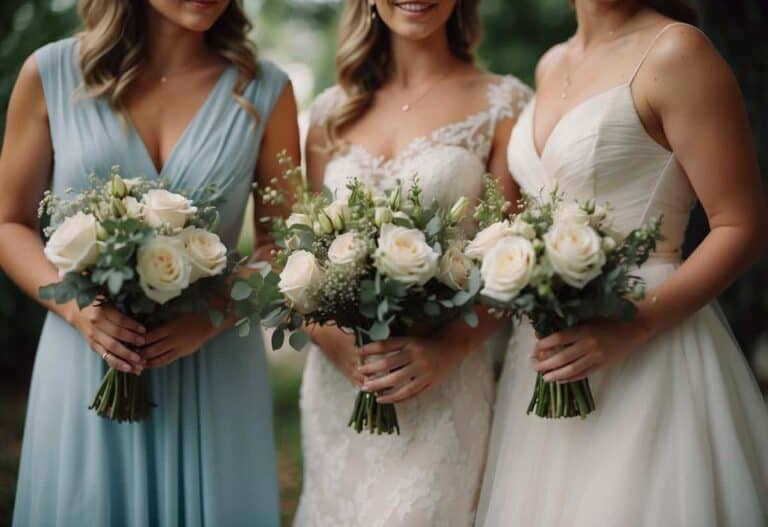Wedding Ring Shopping Tips: Find the Perfect Band
Searching for the perfect wedding ring can be an exciting yet challenging task. It’s a significant piece of jewelry that you’ll wear every day, so you want to make sure it’s just right. Knowing some key tips can make your shopping experience smoother and more enjoyable.
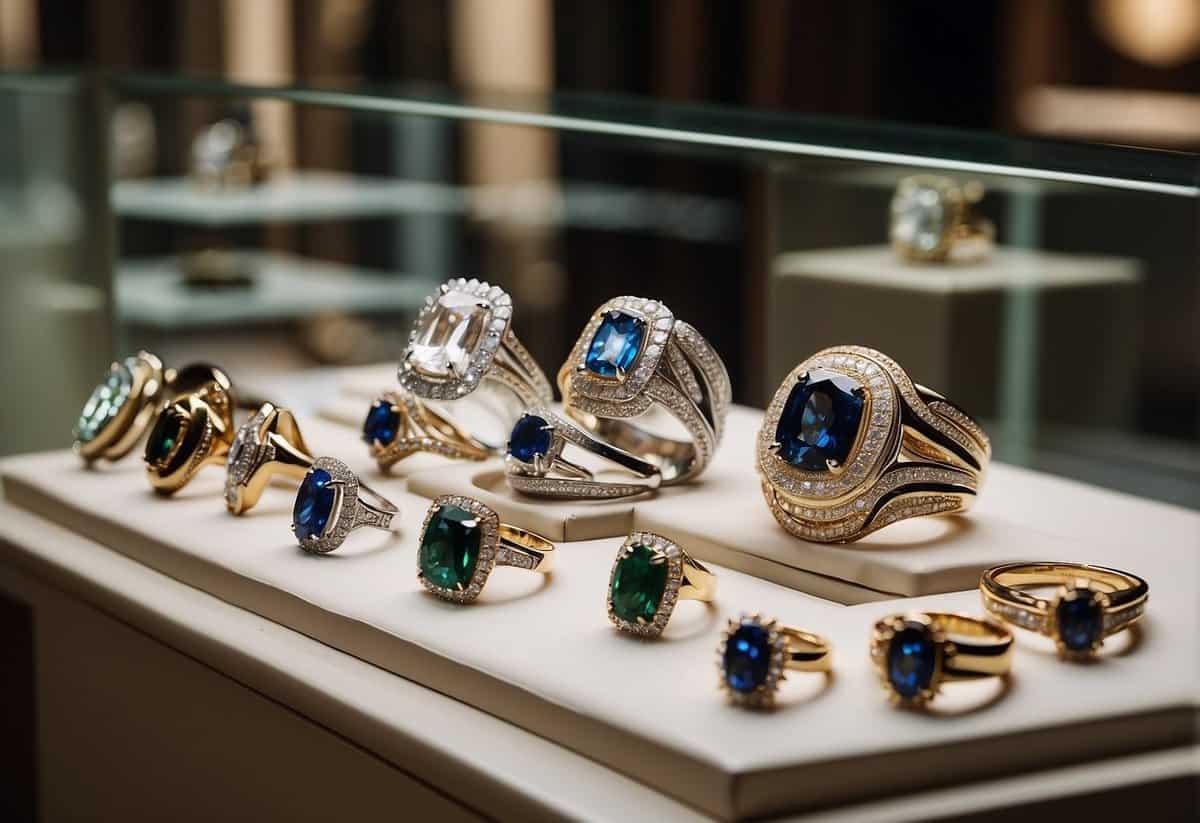
When you start your journey, keeping a few essential tips in mind can help you find the ideal wedding ring. Whether you prefer something simple, elegant, or unique, having a bit of guidance will be invaluable. Stick around to learn the best advice for making your wedding ring choice a memorable one.
1) Consider Your Style Preferences
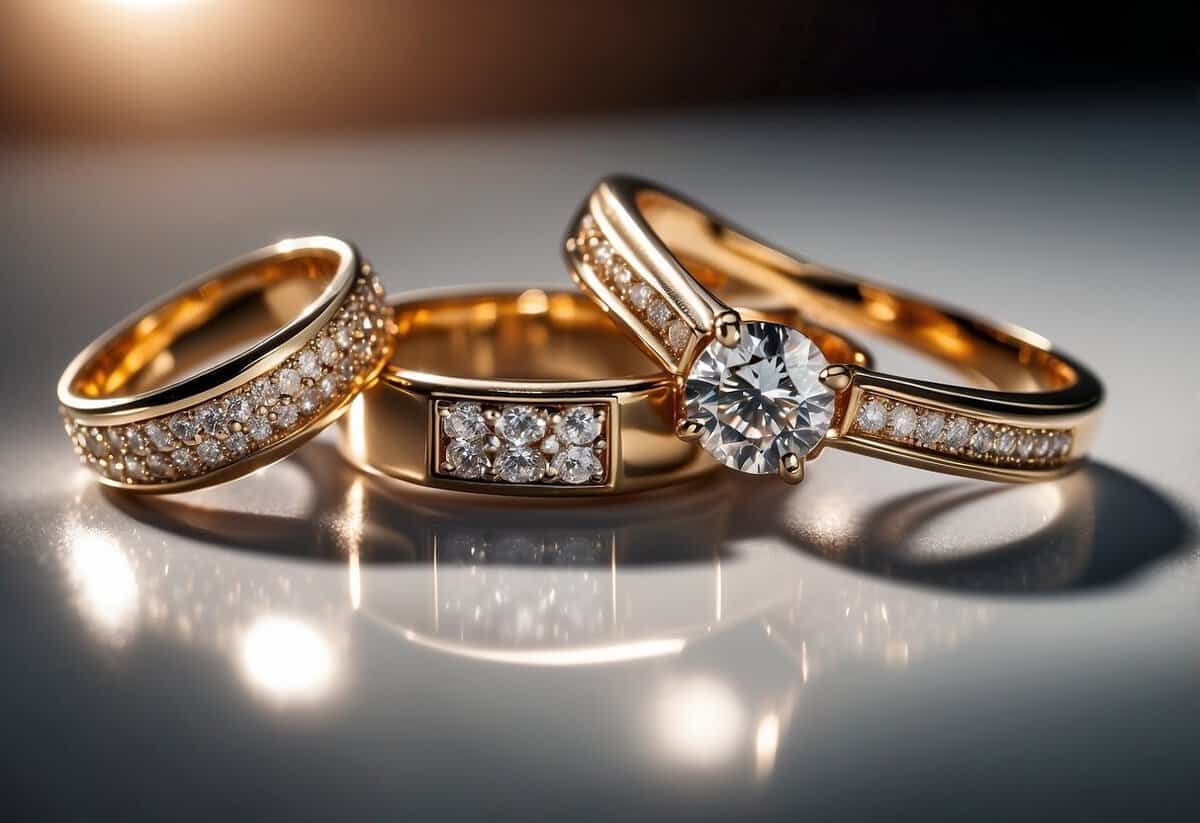
When shopping for a wedding ring, it’s important to think about your personal style. Do you like classic, simple designs or something more modern and unique?
Consider the metals you prefer. Do you lean towards gold, platinum, or maybe rose gold? Each metal gives a different look and feel to the ring.
Think about the overall design. Do you want a single band or one with intricate details? How about gemstones? Some people prefer a plain band while others love the sparkle of diamonds or other stones.
Pay attention to what you naturally wear. Your daily jewelry can be a great indicator of your style. Do you wear statement pieces or more subtle, delicate items?
2) Set a Budget
Before you start shopping for wedding rings, it’s important to set a budget. Sit down with your partner and discuss how much you’re both comfortable spending. This helps you narrow down your options from the start.
Remember that the style and material of the ring can greatly affect the price. Knowing your limit can prevent overspending.
Keep in mind that it’s easy to get carried away, so having a clear budget will keep you grounded. Stick to your plan and you’ll find a beautiful ring without breaking the bank.
3) Understand the 4 Cs of Diamonds
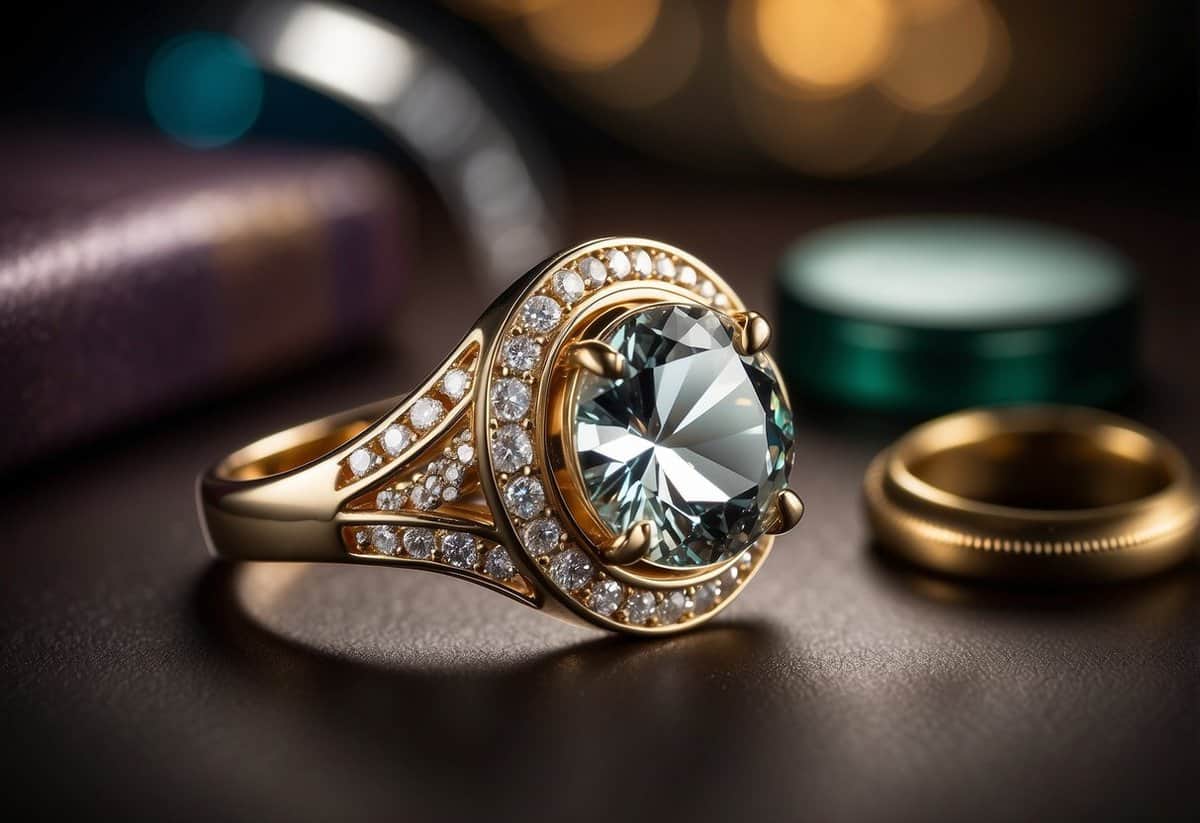
When shopping for a wedding ring, knowing the 4 Cs of diamonds is key.
The first C is Cut. It’s not just about the shape of the diamond but how well it reflects light. A well-cut diamond sparkles more.
Next is Carat. This measures the weight of the diamond. Bigger diamonds are rarer and usually more expensive.
Color refers to the absence of color in a diamond. The less color, the more valuable it is. Diamonds are graded from D (colorless) to Z (light yellow).
Finally, Clarity looks at how clear a diamond is. Fewer flaws or inclusions mean a higher clarity grade. Flawless diamonds are quite rare.
Understanding these 4 Cs helps you choose a diamond that fits your taste and budget.
4) Choose Between Gold, Platinum, or Palladium
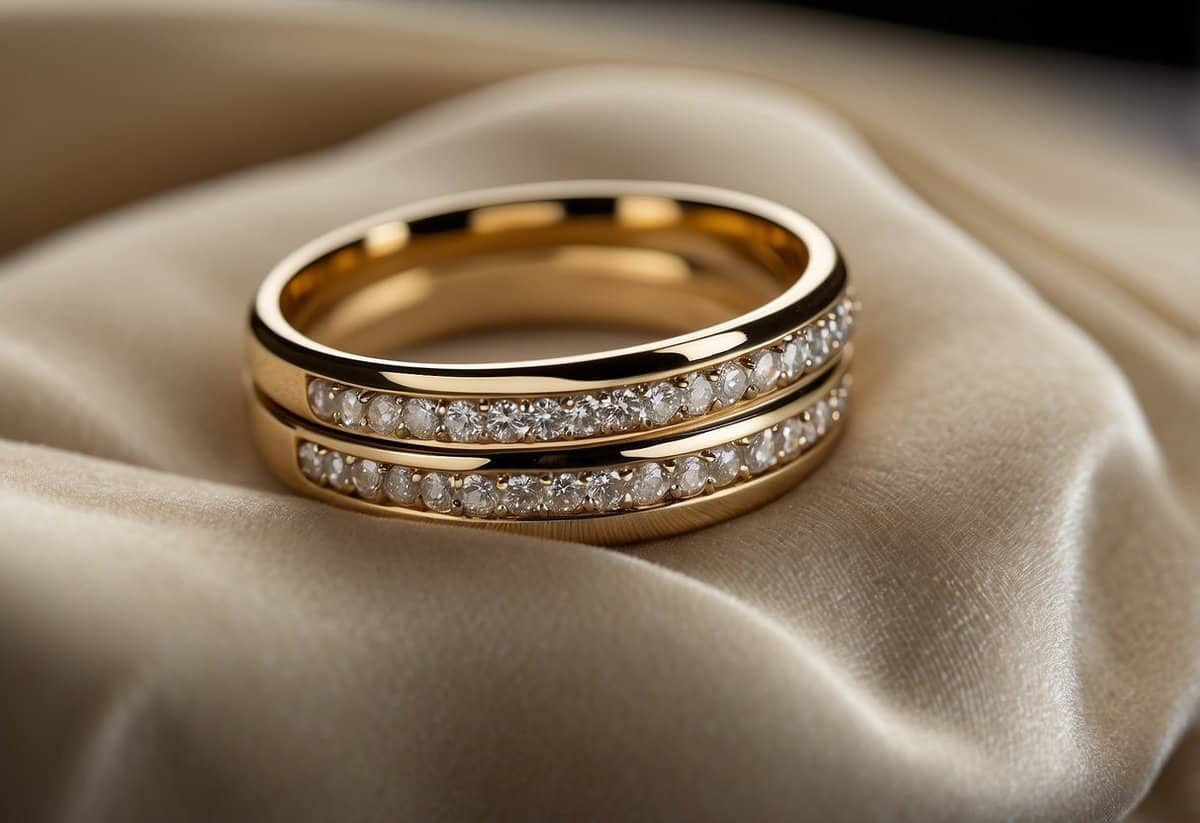
When picking a wedding ring, the type of metal is one of the most important choices. Gold, platinum, and palladium each have their own benefits.
Gold is classic and comes in different colors like yellow, white, and rose. It’s durable and can be more affordable compared to other metals. Gold is also easy to resize if needed.
Platinum is known for its strength and natural white color. It’s heavier than gold and palladium, giving it a solid feel. Platinum is also hypoallergenic, which is great if you have sensitive skin.
Palladium is lighter than platinum but also strong. It’s more affordable than platinum but still offers a beautiful white shine. Palladium is also naturally hypoallergenic and requires less maintenance.
5) Think About Your Lifestyle
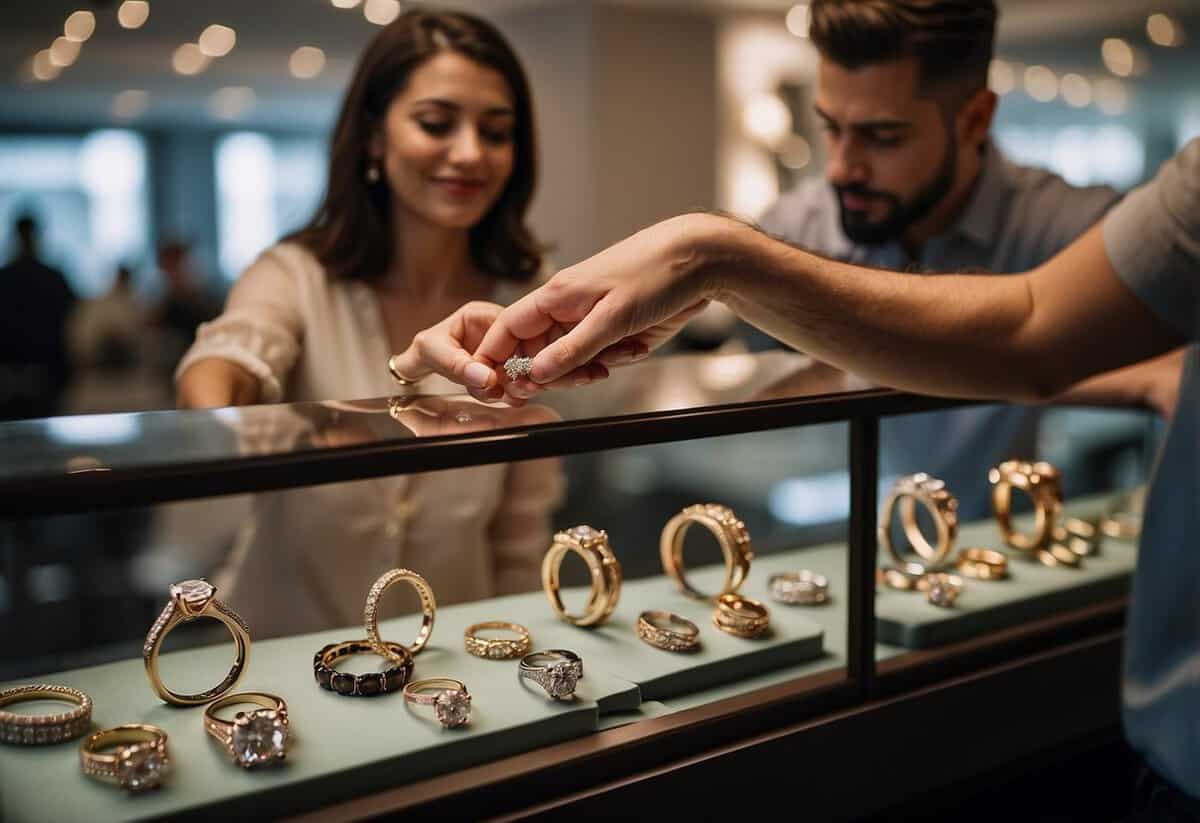
Your lifestyle is key when choosing a wedding ring. If you’re very active, consider durable materials like titanium or tungsten. These metals resist scratches and dents better than gold or platinum.
If you work with your hands a lot, you might want a simpler design. Complex designs can trap dirt and be harder to clean.
Do you rarely take off your ring? Comfort-fit bands are designed for everyday wear. They have rounded edges and feel smoother against your skin.
Lastly, think about any allergies you might have. Some people react to metals like nickel. Hypoallergenic options like platinum or palladium might be better choices.
6) Ring Band Width and Thickness
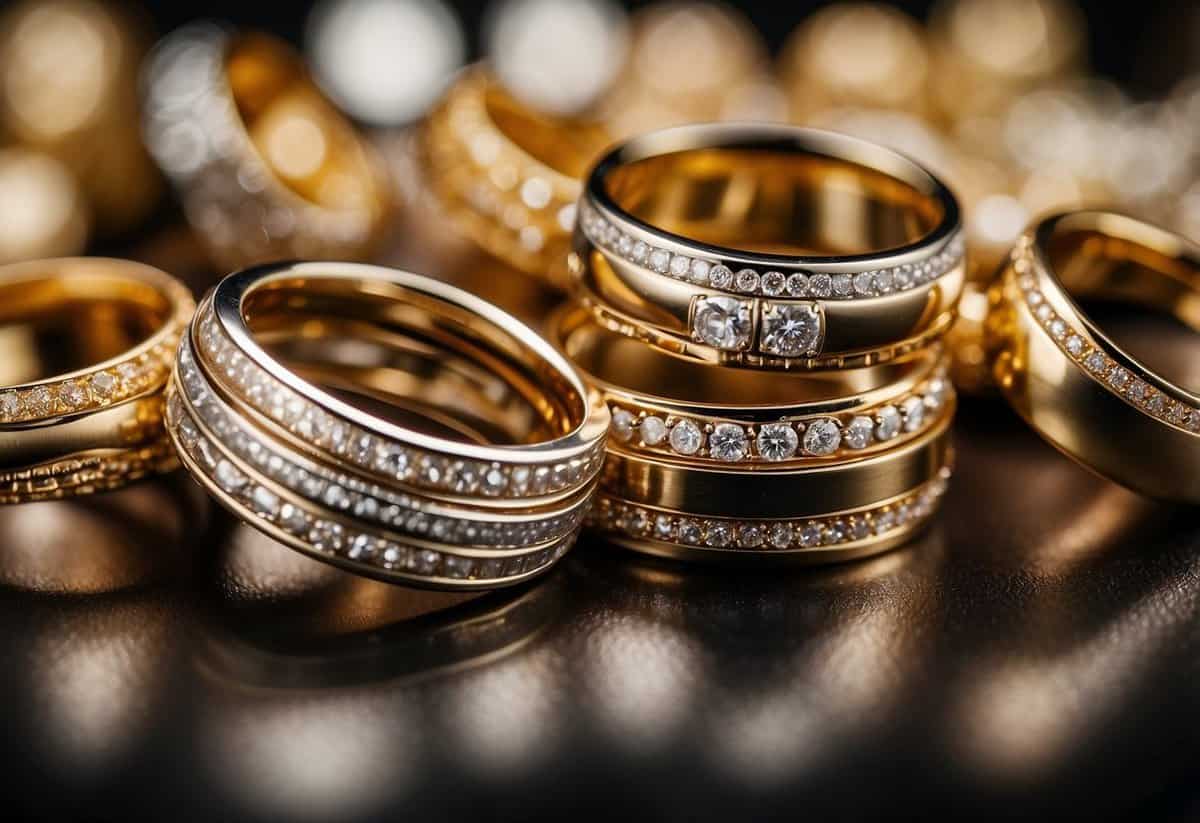
When shopping for wedding rings, it’s important to consider ring band width and thickness. These factors can impact the look and feel of your ring.
Ring width refers to how wide the band is on your finger. Common widths range from 2mm to 12mm. Thinner bands, like 2mm or 4mm, offer a delicate appearance. Wider bands, such as 6mm or 8mm, make a bolder statement.
The thickness of the ring is the height from your finger to the top of the band. This affects durability and comfort. A thicker band typically means more metal, which can feel more substantial.
Choosing the right width and thickness depends on your personal style and comfort. Try on different options to see what feels best for you.
7) Custom Designs vs. Pre-made
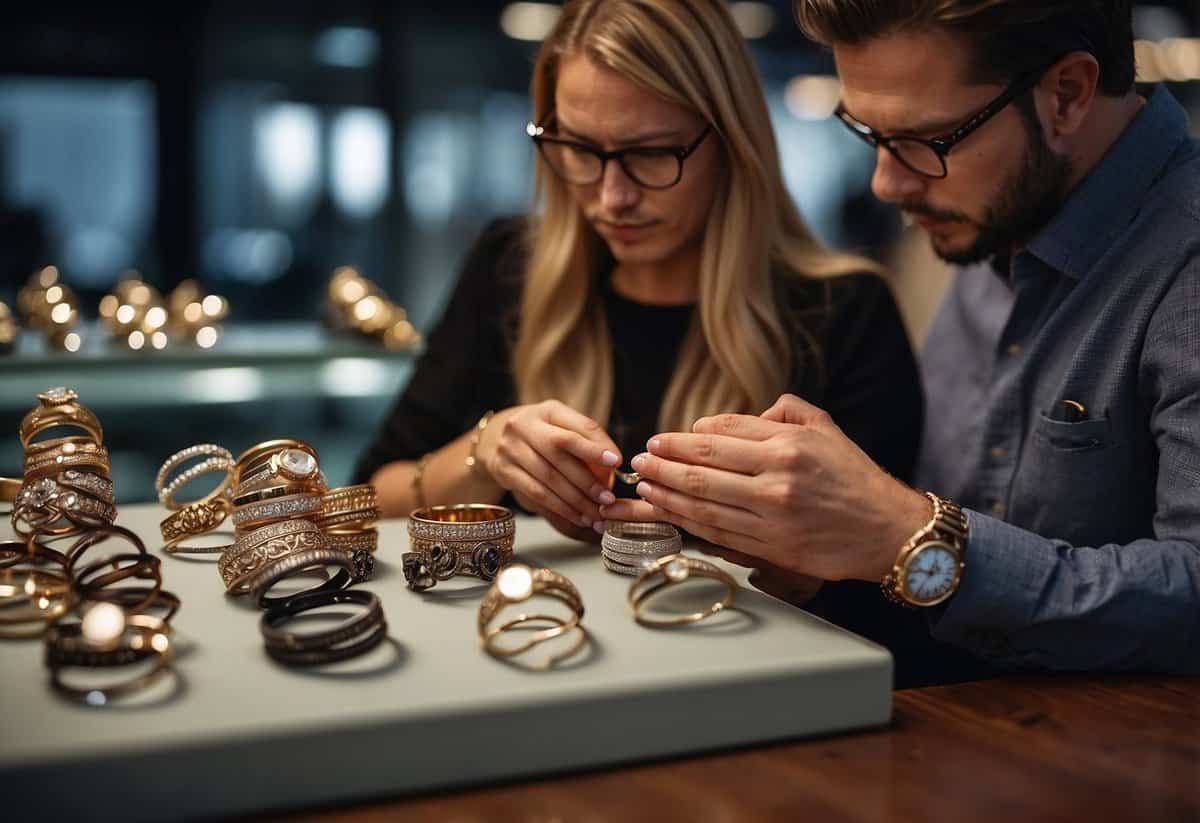
Choosing between custom designs and pre-made rings can be exciting.
Custom rings let you create a unique piece that fits your style. You can pick the metal, gemstone, and design details. This personal touch can make the ring extra special.
Pre-made rings are ready to buy and often less expensive. They come in many styles, so you can find one you love without waiting.
Custom rings offer personalization, like adding special engravings or hidden gems. This makes the ring uniquely yours.
Pre-made rings are usually less hassle. You can see exactly what you’re getting before you purchase, making decisions faster.
Think about your budget, time, and how personal you want the ring to be when deciding between custom and pre-made.
Both choices have their perks, and the best option is the one that makes you happiest.
8) Shop With a Trusted Jeweler
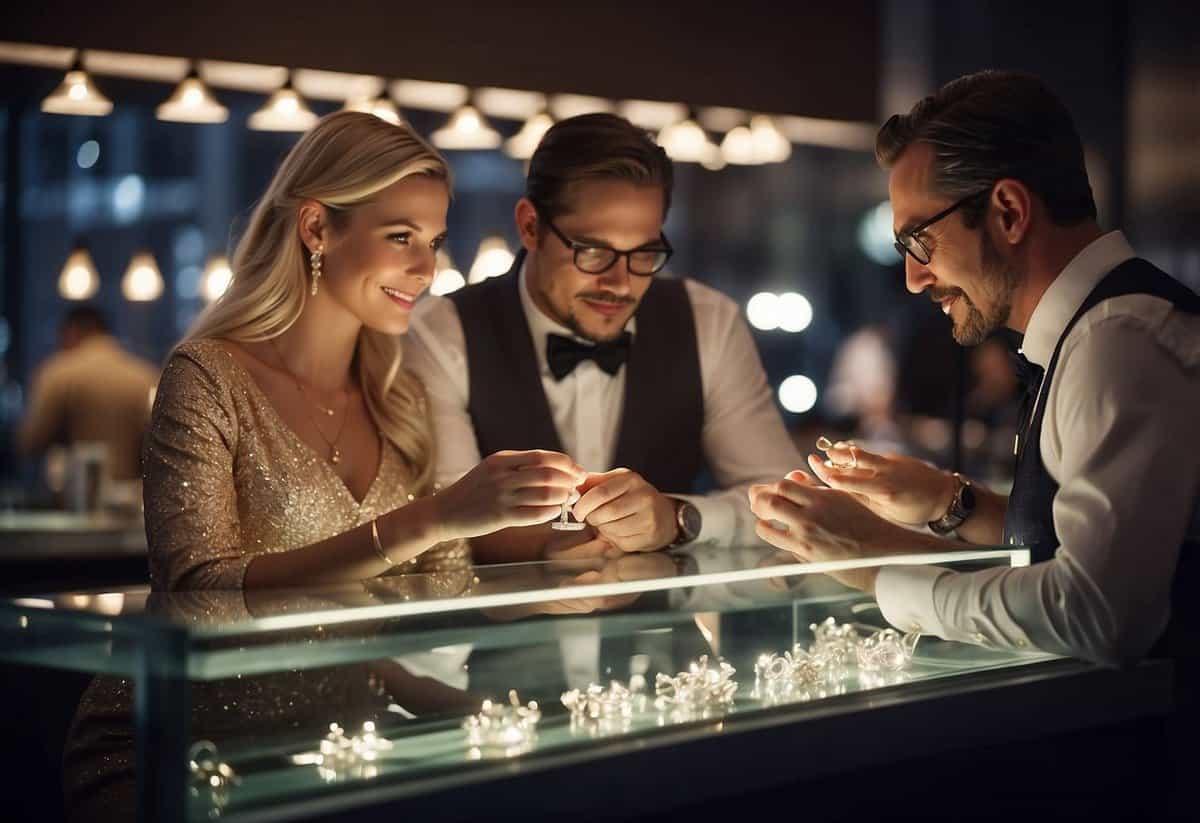
Choosing a trusted jeweler is essential when shopping for a wedding ring. You want to ensure that you’re getting a high-quality ring that matches your budget and style. A reputable jeweler can guide you through the process and answer any questions you have.
Ask friends and family for recommendations. Personal experiences can help you find a jeweler known for excellent service and quality. Read online reviews to see what other customers say about their experiences.
Visit the jeweler in person if you can. Talk to them about their certifications and guarantees. Knowing that a jeweler stands behind their products can give you peace of mind. Always choose a jeweler who values your satisfaction and is willing to work with you to find the perfect ring.
9) Try On Multiple Rings
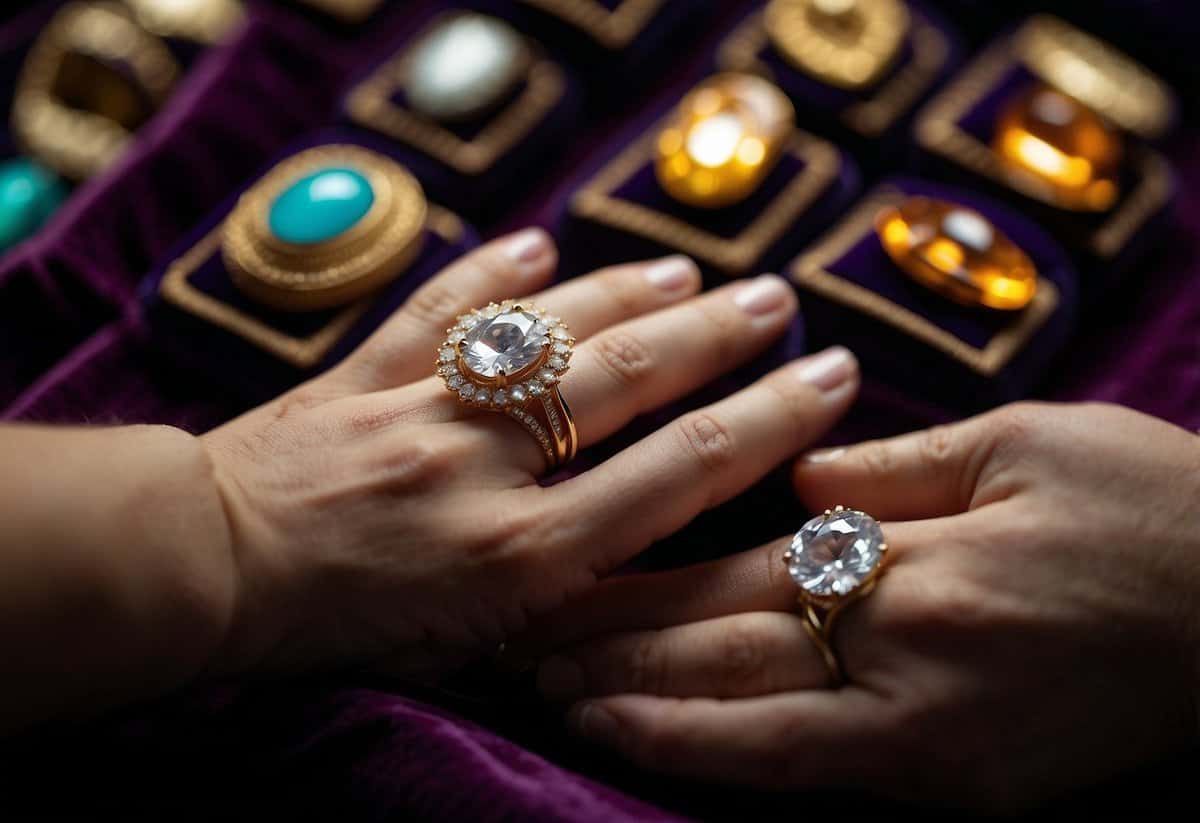
Don’t settle on the first ring you see.
When you try on different rings, you can see which ones look best on your finger. Different styles, metals, and stones can look very different when worn.
You may find that a ring you weren’t considering before looks perfect on your hand.
Trying on multiple rings helps you feel confident in your choice.
10) Don’t Rush Your Decision

Take your time when choosing a wedding ring. This is a big decision and you want to get it right.
Explore different styles and metals. Try on various options to see what feels and looks best on your finger.
Think about the long-term. A wedding ring is something you will wear every day. Make sure it’s comfortable and suits your lifestyle.
Don’t feel pressured to make a quick decision. It’s important to be certain about your choice so you’ll be happy with it for years to come.
Understanding Different Ring Materials
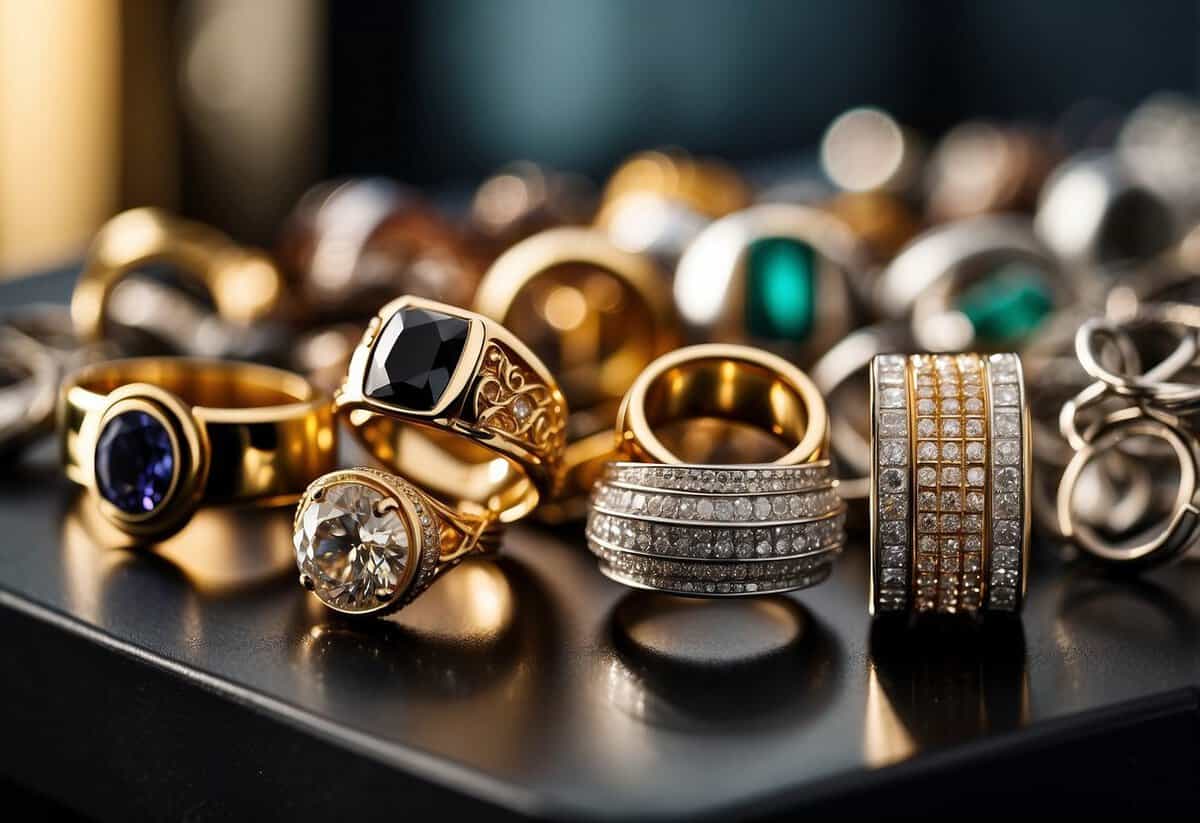
Choosing the right material for your wedding ring is crucial. You need to consider factors like durability, style, and maintenance. Let’s dive into some of the most popular options.
Gold
Gold is a classic choice for wedding rings. It comes in multiple shades, including yellow, white, and rose.
- Yellow Gold: Traditional and timeless. It pairs well with both vintage and modern styles.
- White Gold: Has a shiny, silvery appearance. It’s often coated with rhodium to make it more durable and to enhance its brightness.
- Rose Gold: Contains copper, giving it a warm, pinkish hue. It’s less common but increasingly popular for its unique look.
Gold is softer than other metals, so it may scratch more easily. However, it’s easy to resize, making it a flexible option for any changes in ring size.
Platinum
Platinum is known for its durability and worth. It has a naturally white sheen that doesn’t tarnish, making it a low-maintenance option.
- Durability: Platinum rings are heavy and dense. They are perfect if you want a ring that will last for a long time.
- Hypoallergenic: Ideal for people with sensitive skin as it doesn’t cause allergic reactions.
- Price: More expensive than gold. The cost reflects its rarity and lasting quality.
Platinum may develop a patina over time, which some people love for its antique look. If you prefer a shinier finish, regular polishing can keep it looking new.
Alternative Metals
If you’re looking for something different, alternative metals like titanium, tungsten, and stainless steel offer unique benefits.
- Titanium: Lightweight and strong. It’s resistant to corrosion and doesn’t tarnish.
- Tungsten: Very durable and scratch-resistant. It has a natural gunmetal gray color but can be found in different finishes.
- Stainless Steel: Affordable and durable, though it’s not as precious as gold or platinum.
Each of these metals offers different aesthetics and properties, so consider what’s most important to you in terms of look, feel, and longevity.
Choosing the Right Diamond

Selecting the perfect diamond involves understanding what makes a diamond valuable and choosing a shape that suits your style. Knowing the Four Cs and the various diamond shapes can help you make an informed decision.
The Four Cs
The Four Cs — Cut, Color, Clarity, and Carat — are the key factors in determining a diamond’s quality and value.
-
Cut: This impacts how well a diamond reflects light. It’s important to choose an excellent or very good cut for maximum brilliance.
-
Color: Diamond color is graded from D (colorless) to Z (light yellow or brown). Colorless diamonds (D-F) are rare and more expensive.
-
Clarity: Clarity refers to the presence of internal or external flaws. Grades range from Flawless (no inclusions or blemishes visible under 10x magnification) to Included (inclusions visible to the naked eye).
-
Carat: Carat is a measure of a diamond’s weight. Larger diamonds are rarer and thus more expensive, but personal preference and budget are the main considerations.
Diamond Shapes
Diamonds come in various shapes, and each shape has its unique appeal and characteristics.
-
Round: The most popular shape, known for its excellent sparkle and versatility.
-
Princess: Square or rectangular with pointed corners, offering a modern look and high brilliance.
-
Cushion
corners and larger facets increase brilliance, giving it a vintage flair. -
Oval: Elongated shape can make the finger appear longer and slimmer.
-
Marquise: Football-shaped with pointed ends, offering a unique and regal appearance.
-
Emerald: Rectangular with step cuts that create a hall-of-mirrors effect, highlighting clarity.
When selecting a shape, consider the wearer’s style and engagement ring setting. Personal taste is crucial as this is a piece you’ll likely wear every day.
Setting a Budget

Setting a budget for wedding rings helps you manage your expenses and make informed choices. Understand the key factors influencing cost and learn how to balance quality and price.
Factors Influencing Cost
Wedding ring costs can depend on several factors like the metal type, gemstones, and design complexity.
Metal Type: Rings made of platinum are often more expensive than those made from gold or silver. Gold rings can also vary in price based on their karat (e.g., 14K, 18K).
Gemstones: The inclusion of diamonds or other gemstones can greatly influence the price. Diamonds are typically graded on the “4 Cs” – cut, color, clarity, and carat weight. Larger or higher-quality diamonds cost more.
Design Complexity: More intricate designs can also raise the cost. Custom-made rings or those with elaborate patterns and settings might be pricier.
Balancing Quality and Price
Balancing quality and price requires careful consideration of what’s essential for you.
Prioritize Features: Decide what features are most important. Some may prioritize a high-quality metal band, while others might prefer a larger stone.
Shop Smart: Consider buying online to save money. Many online stores offer competitive prices and wide ranges. Just make sure to check reviews and return policies.
Compromise Wisely: If your budget is tight, consider gemstones like moissanite or sapphires instead of diamonds. They’re beautiful and can be more affordable.
Certification: Ensure that any gemstones, especially diamonds, come with certification from recognized bodies like the GIA or AGS. This assures quality and authenticity without paying inflated prices.
Remember, setting a realistic and manageable budget helps you find a beautiful wedding ring without financial strain.



